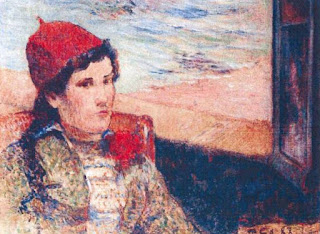Wednesday, November 14, 2012 - 
 No comments
No comments

 No comments
No comments
Update on Pretoria Art Museum Theft
 | |
| Photo Credit - Wikimedia Commons |
Four of the paintings stolen from the Pretoria Art Museum have been found in a small private cemetery in Sunridge Park, behind the Dutch Reformed Church in Port Elizabeth.
Brigadier Marinda Mills of the South African Police Service (SAPS) said the recovered paintings appeared to be Maggie Laubser's Cat and Petunias (1936); JH Pierneef's Eland and bird (1961); Irma Stern's Fishing Boats (1931) and Hugo Naude's Hottentot Chief. Mills told the press that an officer had received an early morning tip from an informant and that the paintings were recovered beneath a park bench by a patrolling canine officer. Though no formal evaluation had been conducted, it appeared that the paintings were in good condition overall.
 |
| This photo released by the South African Police Service (SAPS) |
Earlier in the week, Daywood Khans, a member of staff from the museum, speaking with interviewers from South African radio station Eye Witness News (EWN), reported that during the theft thieves, posing as students had pointed a gun at him and produced a "shopping list" of artworks. Why the paintings were abandoned 700 miles away is still unclear.
Journalist Karabo Ngoepe from Independent Online, A South African news website had reported yesterday that law enforcement has received a tip claiming that a prominent Pretoria artist was suspected of being behind the robbery but did not name the artist. At this time there is no confirmation that this police lead had any connection to the paintings being abandoned and no arrests have been made.
1,100 kilometers (700 miles)
More Information: http://www.artdaily.org/index.asp?int_sec=11&int_new=58926#.UKNDBoV5lBs[/url]
Copyright © artdaily.
More Information: http://www.artdaily.org/index.asp?int_sec=11&int_new=58926#.UKNDBoV5lBs[/url]
Copyright © artdaily.
1,100 kilometers (700 miles)
More Information: http://www.artdaily.org/index.asp?int_sec=11&int_new=58926#.UKNDBoV5lBs[/url]
Copyright © artdaily.org
More Information: http://www.artdaily.org/index.asp?int_sec=11&int_new=58926#.UKNDBoV5lBs[/url]
Copyright © artdaily.org






